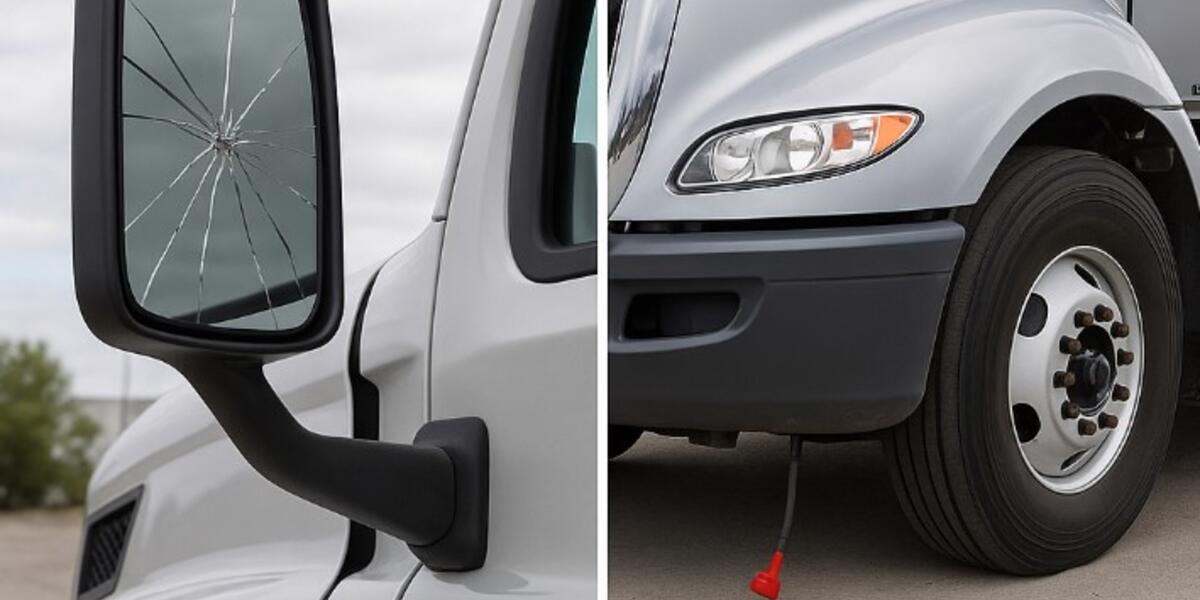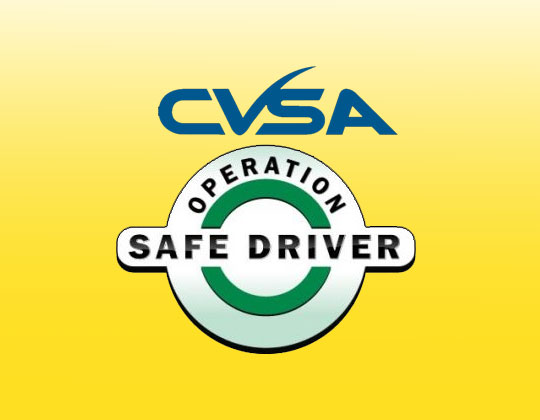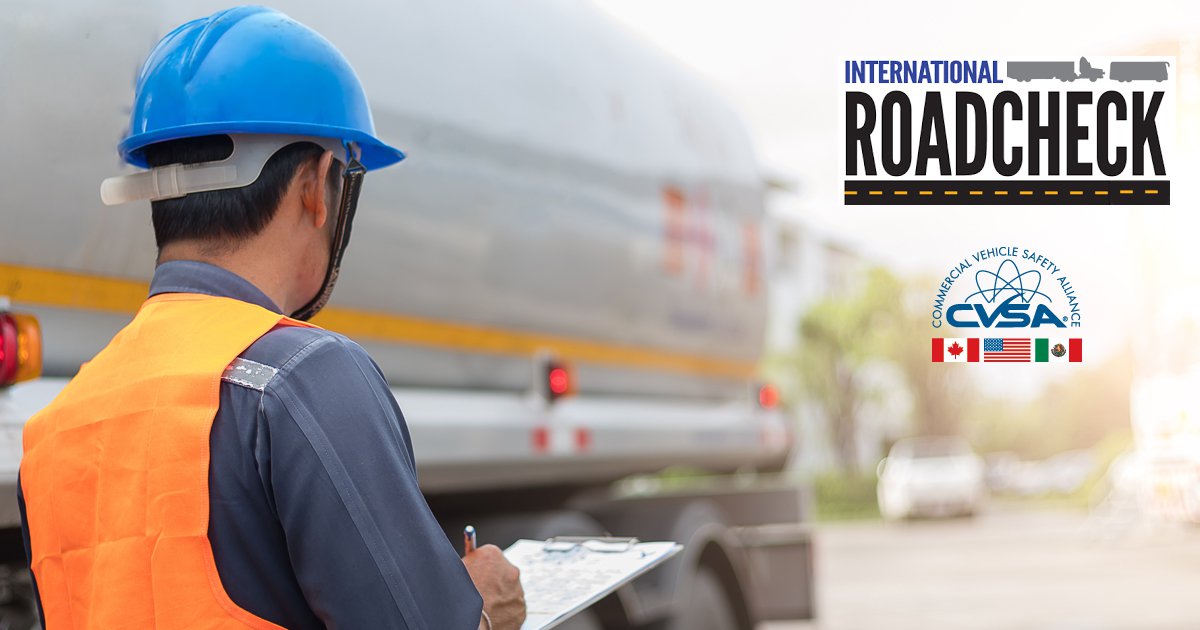The Driver’s Daily Vehicle Inspection Report (DVIR) is part of a driver’s daily responsibility to protect themselves, the motoring public, and the equipment they operate. But do your drivers know the difference between a defect and a safety-sensitive defect?
Drivers and technicians need to understand the Federal Motor Carrier Safety Regulations (FMCSR) outlined in CFR 399 Appendix G, which define safety-sensitive defects—those that would render a unit out of service during a pre- or post-trip inspection.
Here is the FMCSA guidance for CFR 396.11:
Driver Vehicle Inspection Reports
Driver’s Daily Vehicle Inspection Process
This process is a requirement under the FMCSR to ensure vehicles are in safe operating condition.
A crucial part of every driver’s daily operation is inspecting the commercial vehicle they operate. Over the years, there has been confusion regarding pre- and post-trip inspections.
Let’s start with the pre-trip inspection. FMCSA regulations (CFR 396.13) state that before driving a motor vehicle, the driver shall:
-
Be satisfied that the vehicle is in safe operating condition.
-
Review the last driver vehicle inspection report.
-
Sign the report—only if the driver prepared the report—to acknowledge they have reviewed it and certify that the required repairs have been performed, and any noted defects or deficiencies addressed.
Note: The signature requirement does not apply to listed defects on a towed unit that is no longer part of the vehicle combination.
Although the pre-trip inspection is not required by regulation to be documented, it’s a good idea. I recommend flagging the pre-trip inspection on the driver’s record of duty status in the “Grid” section.
FMCSA 49 CFR 396.11 requires every driver to prepare a written report (DVIR) at the end of each workday for every vehicle operated. This report must cover the following parts and
accessories:
- Service brakes, including trailer brake connections
- Parking (hand) brake
- Steering mechanism
- Lighting devices and reflectors
- Tires
- Horn
- Windshield wipers
- Rear vision mirrors
- Coupling devices
- Wheels and rims
- Emergency equipment
The report must identify and list any defect or deficiency that would affect the safe operation of the vehicle or cause a mechanical breakdown. If there are no defects, the driver must indicate this on the DVIR. In all instances, the driver must sign the DVIR upon completion.
If defects or deficiencies are noted, the motor carrier is required to correct or arrange for the correction of these issues before the vehicle can be operated. However, not all issues must be corrected—only those outlined in Appendix G of the FMCSR that directly affect the safe operation of the vehicle.
Technicians, drivers, and service managers should familiarize themselves with Appendix G to determine which defects require correction and which do not. The DVIR must then be signed by the repairing technician. This certification is required on all copies of the DVIR.
The driver must retain the previous day’s DVIR in the vehicle, and the motor carrier is required to maintain all DVIRs for 90 days.
If you haven’t reviewed Appendix G of FMCSA CFR 399 with your drivers, I highly recommend including this in your next driver safety meeting:
Appendix G – Minimum Periodic Inspection Standards
Do your Drivers Need Training in Performing a Pre and Post Trip Inspection?
English:
- Straight Truck: https://youtu.be/rsUTQrN-514
- Tractor Trailer: https://youtu.be/9TL62H5yUQA
Spanish:
- Straight Truck: https://www.youtube.com/embed/SDvbuAuKQLM
- Tractor Trailer: https://www.youtube.com/embed/529XGiJxTfU
Commercial Vehicle Safety Alliance (CVSA) Driver Tip Sheet
The CVSA has published a “cheat sheet” to help carriers and drivers prepare for this
year’s Roadcheck.
It includes key points for both vehicle and driver inspections. Feel free to print it out and use it as a handout for your drivers.
International-Roadcheck-Vehicle-Inspection-Cheatsheet.pdf
NAS-Driver-Inspection-Cheatsheet.pdf
Best Practice Guidelines for Roadside Inspections:
-
Train drivers on how to perform thorough and high-quality pre-trip inspections to reduce the risk of violations.
-
Review your CSA scores monthly at www.ai.fmcsa.dot.gov by entering your DOT number or company name.
-
Review both vehicle and driver BASICs, and cross-reference your inspection records with the reports submitted by drivers. Follow up with any drivers who did not turn in inspection reports.
-
Use the “Carrier History” tab under the Tools/Resources section of your FMCSA portal home page to track whether your inspection numbers are increasing or decreasing.
-
Go over inspection results and any violations with your maintenance provider to help prevent recurring issues.
-
Keep copies of all roadside inspection reports in your tractor and trailer files, including any related repair orders for vehicles with violations.
-
Use inspection data (e.g., date, time, location) to cross-reference with driver Hours of Service documentation to help detect possible falsification.
-
Train drivers on how to conduct themselves during a roadside inspection and what to expect during the process.
-
Keep vehicles clean and well-maintained to reduce the chances of being selected for inspection.
-
Remind drivers that moving violations often lead to roadside inspections.
-
Consider offering incentives to drivers who successfully pass inspections without violations.
Question of the Week
Question: My driver has gone through a roadside inspection; how long do I have to keep this documentation on file?
Answer: Copies of all roadside inspections are to be kept by the motor carrier for 12 months. The driver is required to turn in the inspection to the motor carrier within 24 hours. If they are not going to return to the terminal they are to mail in the inspection. If the inspection resulted in violations, they are to be corrected or repaired and the inspection form is to be signed and certified that the repairs were completed and sent back to the state of inspection within 15 days.
International Roadcheck 2025 May 13-15
The Commercial Vehicle Safety Alliance (CVSA) International Roadcheck is scheduled for May 13–15.
This annual initiative is a high-visibility, high-volume enforcement event focused on commercial motor vehicle inspections and regulatory compliance across Canada, Mexico, and the United States.
During the 72-hour period, CVSA-certified law enforcement officials will conduct inspections at weigh stations, temporary inspection sites, and through mobile patrols. These inspections are designed to verify compliance with federal, state, provincial, or territorial regulations. The data collected will be analyzed and shared later this summer.
Each year, International Roadcheck highlights a specific focus area. For 2025, the focus areas are:
-
Tractor protection systems
-
Alcohol and controlled substance possession
Controlled substance and alcohol possession/use continue to be serious concerns for carriers, drivers, and the general public. The growing number of drivers listed in the U.S. Drug and Alcohol Clearinghouse (DACH) is an alarming trend that threatens the safety of roadways throughout North America.
Throughout Roadcheck, inspectors will perform the North American Standard Level I Inspection—a comprehensive, 37-step procedure that includes a detailed examination of vehicle components as well as a review of driver credentials and documentation.










